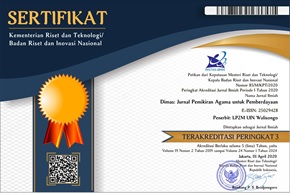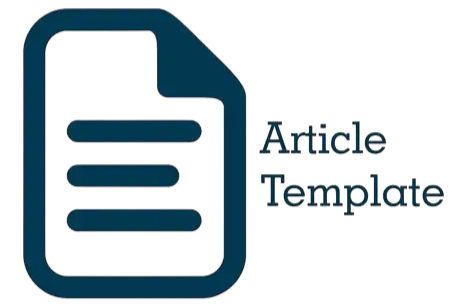Pelatihan Pengembangan Instrumen HOTS bagi Guru Kimia SMA dan MA di Kota Semarang sebagai Upaya Mewujudkan Paradigma Pendidikan Abad 21
DOI:
https://doi.org/10.21580/dms.2022.221.12797Keywords:
HOTS, Instrumen Penilaian, PelatihanAbstract
Assessment is a process to measure students' thinking skills and learning outcomes. Teachers must be able to develop assessment instruments by the demands of the curriculum for assessing higher-order thinking skills. The purpose of this service activity is to provide training in the development of HOTS assessment instruments for SMA/MA teachers in the Semarang. The method used in this service is the discourse and discussion method using an active participatory approach and technical guidance. Training activities are carried out online through the Zoom channel. The number of participants who took part in the training was 18 teachers. The results of this training activity are the teacher's ability to develop the HOTS assessment instrument for chemistry learning by the educatioradigm 21 and the 2013 curriculum. The skills developed include: identifying higher order thinking indicators according to the taxonomy, identifying higher order thinking indicators based on HOTS types, compiling an assessment grassessmentoping questions, making answer keys, and scoring, rubrics.
Penilaian merupakan proses untuk mengukur kemampuan berpikir dan hasil belajar siswa. Guru harus mampu mengembangkan instrumen penilaian sesuai dengan tuntutan kurikulum, yaitu instrumen penilaian kemampuan berpikir tingkat tinggi. Tujuan dari kegiatan pengabdian ini adalah memberikan pelatihan pengembangan instrumen penilaian High Order Thinking Skills (HOTS) bagi guru SMA/MA di Kota Semarang. Metode yang digunakan dalam pengabdian ini adalah metode ceramah dan tanya jawab dengan menggunakan pendekatan partisipatif aktif dan bimbingan teknis. Kegiatan pelatihan dilakukan secara daring melalui kanal Zoom. Jumlah peserta yang mengikuti kegiatan pelatihan sebanyak 18 orang terdiri dari 16 guru SMA dan 2 guru MA. Hasil kegiatan pelatihan ini berupa kemampuan guru dalam mengembangkan instrumen penilaian HOTS untuk pembelajaram kimia sesuai dengan paradigma pendidikan 21 dan kurikulum 2013. Kemampuan yang dikembangkan antara lain: mengidentifikasi indikator berpikir tingkat tinggi sesuai dengan taksonomi, mengidentifikasi indikator berpikir tingkat tingggi berdasarkan jenis HOTS, menyusun kisi-kisi penilaian, mengembangkan butir soal, membuat kunci jawaban dan rubrik penilaian.
Downloads
References
Al-khatib, B. A. (2012). The Effect of Using Brainstorming Strategy in Developing Creative Problem-Solving Skills among Female Students in Princess Alia University College Department of Psychology and Special Education. American International Journal of Contemporary Research, 2(10), 29–38.
Amalia, N. F., & Susilaningsih, E. (2014). Pengembangan Instrumen Penilaian Keterampilan Berpikir Kritis Siswa SMA pada Materi Asam Basa. Jurnal Inovasi Pendidikan Kimia, 8(2), 1380–1389.
Areesophonpichet, S. (2013). A Development of Analytical Thinking Skills of Graduate Students by using Concept Mapping. The Asian Conference on Education 2013 Official Conference Proceedings, 1–16. Retrieved from www.iafor.org
Chonkaew, P., Sukhummek, B., & Faikhamta, C. (2016). Development of Analytical Thinking Ability and Attitudes towards Science Learning of Grade-11 Students through Science Technology Engineering and Mathematics (STEM Education) in the Study of Stoichiometry. Chemistry Education Research and Practice, 17(4), 842–861. https://doi.org/10.1039/x0xx00000x
Facione, P. a. (2011). Critical Thinking : What It Is and Why It Counts. Insight Assessment, (ISBN 13: 978-1-891557-07-1.), 1–28. Retrieved from https://www.insightassessment.com/CT-Resources/Teaching-For-and-About-Critical-Thinking/Critical-Thinking-What-It-Is-and-Why-It-Counts/Critical-Thinking-What-It-Is-and-Why-It-Counts-PDF
Greenstein, L. (2012). Assessing 21st Century Skills: A Guide to Evaluating Mastery and Authentic Learning. California: Corwin Press A Sage Publications Company.
Haryanti, Y. D., & Saputra, D. S. (2019). Instrumen Penilaian Berpikir Kreatif Pada Pendidikan Abad 21. Jurnal Cakrawala Pendas, 5(2), 58–64. https://doi.org/10.31949/jcp.v5i2.1350
Hotaman, D. (2008). The Examination of the Basic Skill Levels of the StudeStudentsccordance With the Perceptions of Teachers, Parents and, Students. International Journal of IntruInstruction), 39–55.
Imam Farisi, M. (2016). Developing the 21 St-Century Social Studies Skills Through Technology Integration. Turkish Online Journal of Distance Education, (January), 16–30.
Jarwan, F. (2008). Talent, EExcellencee and Creative, it. Oman: Dar AL-Fiker.
Kao, C.Yaoo. (20Ya. Exploring the relationships between analogical, analytical, and creative thinking. Thinking Skills and Creativity, 13, 80–88. https://doi.org/10.1016/j.tsc.2014.03.006
Kearns, L. (2012). Student Assessment in Online Learning: Challenges and Effective Practices. Jolt.Merlot.Org, 8(3), 198–208. Retrieved from http://jolt.merlot.org/vol8no3/kearns_0912.htm
Lince, R. (2016). Creative Thinking Ability to Increase Student Junior High School Student Mathematicalying Models Numbered Heads Together. Journal of Education and Practice, 7(6), 206–212.
Mardapi, Djemari, & Andayani, S. (2012). Performance Assessment dalam Perspektif Multiple Criteria Decision Making. Prosiding Seminar Nasional Penelitian, Pendidikan Dan Penerapan MIPA UNY, 136–145.
Marzano, R. J., & Kendall, J. S. (2007). Praise for the Second Edition of The New Taxonomy of Educational Objectives (Second Edi). United StatetStateserica: Corwin Press A Sage Publications Company.
Munandar, U. (2004). Pengembangan Kreativitas Anak Berbakat. Jakarta: Rineka Cipta.
Petrovska, S., & Veselinovska, S. S. (2013). Contemporary Pedagogical Approaches for Developing Higher Level Thinking on Science Classes. Procedia - Social and Behavioral Sciences, 92(April), 702–710. https://doi.org/10.1016/j.sbspro.2013.08.742
Sari, W. K., & Nada, E. I. (2022). Marzano Taxonomy-Based Assessment Instrument to Measure Analytical and Creative Thinking Skills. Jurnal Pendidikan Kimia Indonesia, 6(1), 46–54. https://doi.org/10.23887/jpk.v6i1.40117
Siswono, T. (2008). Model Pembelajaran Matematika Berbasis Pengajuan dan Pemecahan Masalah untuk Meningkatkan Kemampuan Berpikir Kreatif. Surabaya: Unesa University Press.
Sitthipon, A.-I. (2012). Development of Teachers’ Learning Management Emphasizing on lyticalinking in Thailand. Procedia - Social and Behavioral Sciences, 46(December 2012), 3339–3344. https://doi.org/10.1016/j.sbspro.2012.06.063
Subekti, Y., & Ariswan, A. (2016). Pembelajaran Fisika dengan Metode Eksperimen untuk Meningkatkan Hasil Belajar Kognitif dan Keterampilan Proses Sains. Jurnal Inovasi Pendidikan IPA, 2(2), 252–261.
Taleb, H., & Chadwick, C. (2016). Enhancing Student Critical and Analytical Thinking Skills At a Higher Education Level in Developing Countries : Case Study of the British University in Dubai. Journal of Educational and Instructional Studies in the World, 6(February), 67–77.
Toledo, S., & Dubas, J. M. (2016). Encouraging Higher-Order Thinking in General Chemistry by Scaffolding Student Learning Using Marzano’s Taxonomy. Journal of Chemical Education, 93(1), 64–69. https://doi.org/10.1021/acs.jchemed.5b00184
Yuni, E., Dwi, W. ;, Sudjimat, A., & Nyoto, A. (2016). Transformasi Pendidikan Abad 21 sebagai Tuntutan Pengembangan Sumber Daya Manusia di Era Global. Prosiding Seminar Nasional Pendidikan Matematika 2016, 263–278.
Downloads
Published
Issue
Section
License
Copyright
The copyright of the received article shall be assigned to the journal as the publisher of the journal. The intended copyright includes the right to publish the article in various forms (including reprints). The journal maintains the publishing rights to the published articles. Therefore, the author must submit a statement of the Copyright Transfer Agreement.*)
Licensing

This work is licensed under a Creative Commons Attribution-ShareAlike 4.0 International License.
In line with the license, authors are allowed to share and adapt the material. In addition, the material must be given appropriate credit, provided with a link to the license, and indicated if changes were made. If authors remix, transform or build upon the material, authors must distribute their contributions under the same license as the original.
_______
*) Authors whose articles are accepted for publication will receive confirmation via email and send a Copyright Transfer Agreement.









